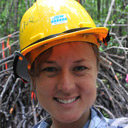
LIMA, Peru—An initiative to restore forests and make use of degraded land throughout Latin America and the Caribbean has been launched at the Global Landscapes Forum in Lima, Peru.
Seven Latin American countries pledged to work with research organizations and the private sector to restore a total of 20 million hectares of degraded land by 2020 – in an effort dubbed Initiative 20×20.
Mexico was the largest contributor with 8.5 million hectares pledged, followed by Peru with 3.2 million hectares, Guatemala with 1.2 million hectares and Colombia with 1 million. Ecuador, Chile and Costa Rica also joined the commitment.
Alongside representatives of the seven countries, Peru’s Minister of Agriculture Juan Manuel Benites Ramos told a full house: “The forest we are losing is putting at risk our future in terms of availability of water and land.”
“So it’s necessary to set these ambitious goals to show we have the willingness to solve this situation fast,” he said.
“The costs of action are low compared to the benefits that this country will receive.”
Andrew Steer, the CEO and President of the World Resources Institute (WRI), said restoration does not necessarily mean reforestation or locking people out of the land.
“It could mean reforestation, or return to productive agriculture, or it could become a mixed-use landscape,” he said.
“It’s essentially taking land that is today degraded, that has very little economic and ecological value, and turn it into something that is good for people and good for the planet.”
In the New York Declaration on Forests, made at the United Nations in September, countries backed the “Bonn Challenge,” pledging to restore 150 million hectares of degraded landscapes and forestlands worldwide by 2020 – and 350 million hectares by 2030.
Andrew Steer says WRI research shows two billion hectares of the Earth’s surface is degraded land.
“The opportunity to restore land is one of the most wonderful opportunities we have in the world today. Not only to sequester carbon – and it could almost close the carbon gap on its own – but in addition to that it provides food security, income, greater resilience of agricultural yields and so on,” he said.
That’s not to say it can happen overnight.
“We do recognize that this is difficult territory and moving forward into the implementation stage is not easy,” Steer says.
What it will require, he believes, is for a change in the way government ministries work.
“Government ministries have to operate different from the way they have traditionally operated. In most countries, government ministries and departments don’t like to share information with each other, they have their own flags that they want to wave, and they need to learn to work together,” he said.
“The good news is we now have examples all around the world of governments that got serious about restoration – demonstrating that it could be done.”
One of those examples, he says, is Costa Rica, which in two decades restored its forest cover from below 30 percent in 1987, to about 50 percent by 2010.
“What is clear is that the economics of this is very attractive,” Steer said.
“We’ve done a lot of work on this and have shown that for most ecosystems in the world that were once forests, restoration has a very high rate of return – for the individual, the nation and the region.”
And it seems that is being recognized. The restoration activities of the Initiative 20×20 will be partly supported through US$356 million sourced from impact investors and bilateral and multilateral funders.
Nature has given us another chance to make amends for what we have done wrong
One of those impact investors, Christian del Valle from Althelia Climate Fund, committed US$120 million to the fund.
“It takes a huge step to move restoration goals from a vague realm of policy dialogue to taking it down to the ground using milestones that are relevant to Latin American governments and citizens,” he said.
“These tangible, achievable milestones of the 20×20 initiative match very well with our objectives and criteria for investment.”
Stephen Rumsey from Permian Global intends to commit US$100 million, and said restoring degraded forest is one of the cheapest ways to sequester carbon to mitigate climate change.
“It’s unbelievable this is not part of global policy, we have to get our act together, and we want to be a part of it,” he said.
Those behind the initiative believe that more Latin American and Caribbean countries will also sign on over the coming weeks and months – and hope more finance will flow, too.
Grethel Aquilar, IUCN coordinator for Central America and one of the partners for the initiative, said meeting the Bonn Challenge is now one step closer.
“Nature has given us another chance to make amends for what we have done wrong,” she said.
“Today’s a very exciting day full of hope for Latin America and the Caribbean. With the funding of this initiative, we are getting closer to reducing land degradation and deforestation and to changing our collective destiny.”
We want you to share Forests News content, which is licensed under Creative Commons Attribution-NonCommercial-ShareAlike 4.0 International (CC BY-NC-SA 4.0). This means you are free to redistribute our material for non-commercial purposes. All we ask is that you give Forests News appropriate credit and link to the original Forests News content, indicate if changes were made, and distribute your contributions under the same Creative Commons license. You must notify Forests News if you repost, reprint or reuse our materials by contacting forestsnews@cifor-icraf.org.























